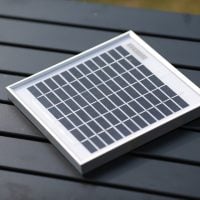In the world of non-profit organizations, particularly those focused on sustainable energy initiatives like solar projects, the ability to effectively communicate your vision and needs to potential donors is paramount. A donor pitch deck serves as a visual and narrative tool that encapsulates your project’s essence, goals, and the impact it aims to achieve. It is not merely a presentation; it is a strategic document designed to persuade and engage stakeholders who can provide the necessary funding to bring your solar initiative to life.
Crafting a compelling pitch deck requires a blend of storytelling, data presentation, and emotional appeal, all tailored to resonate with the values and interests of your audience. Creating a successful donor pitch deck involves understanding both the technical aspects of your project and the emotional triggers that motivate donors. It is essential to present a clear, concise, and compelling case for support.
This article will guide you through the critical components of an effective donor pitch deck, focusing on actionable tips and real-world examples that can enhance your approach. By the end of this guide, you will be equipped with strategies to create a pitch deck that not only informs but also inspires potential donors to invest in your solar project. Are You Working on Solar Innovation or Clean Energy Access? Join us to receive updates.
Understanding the Solar Project
Before diving into the creation of your pitch deck, it is crucial to have a comprehensive understanding of your solar project. This includes its objectives, the technology involved, and the specific community or environment it aims to serve. For instance, if your project focuses on providing solar energy to rural areas lacking reliable electricity, you must articulate how this initiative will improve the quality of life for residents.
Understanding the nuances of your project allows you to communicate its significance effectively and answer any questions potential donors may have. Moreover, it is essential to consider the broader context in which your solar project operates. This includes understanding local energy needs, regulatory frameworks, and potential challenges such as land acquisition or community acceptance.
By conducting thorough research and analysis, you can present a well-rounded view of your project that highlights its feasibility and relevance. For example, if you are targeting a specific region with high solar potential but low energy access, showcasing data on energy poverty in that area can strengthen your case and demonstrate the urgency of your project.
Identifying Potential Donors
Identifying the right donors is a critical step in securing funding for your solar project. Not all donors will be interested in every initiative; therefore, it is essential to research and target those whose values align with your mission. Start by creating a profile of ideal donors based on their previous funding history, interests in renewable energy, and commitment to social impact.
This could include foundations focused on environmental sustainability, corporate sponsors with corporate social responsibility (CSR) initiatives, or individual philanthropists passionate about clean energy. Networking plays a vital role in identifying potential donors. Attend industry conferences, workshops, and community events where you can connect with individuals and organizations that share your vision.
Utilize platforms like LinkedIn to reach out to professionals in the renewable energy sector or those involved in philanthropy. Additionally, consider leveraging existing relationships within your organization or board members who may have connections to potential funders. By building a robust list of targeted donors, you can tailor your pitch deck to address their specific interests and motivations.
Crafting a Compelling Narrative
A compelling narrative is at the heart of any successful donor pitch deck. Your story should not only outline what your solar project aims to achieve but also evoke an emotional response from potential donors. Start by framing the problem: why is there a need for solar energy in the targeted community?
Use real-life anecdotes or testimonials from individuals who would benefit from the project to illustrate the impact of energy access on their lives. This personal touch can create a connection between the donor and the beneficiaries of your project. Once you have established the problem, transition into presenting your solution—your solar project.
Clearly articulate how your initiative addresses the identified needs and what makes it unique compared to other solutions. Highlight any innovative technologies or approaches you plan to implement. For example, if your project incorporates community engagement in its design and implementation phases, emphasize how this participatory approach not only fosters local ownership but also enhances sustainability.
A well-crafted narrative will not only inform but also inspire potential donors to envision themselves as part of the solution.
Highlighting the Impact of Solar Projects
When pitching a solar project, it is essential to highlight its potential impact comprehensively. Donors want to know how their contributions will make a difference—not just in terms of energy production but also in social, economic, and environmental outcomes. Use data and case studies from similar projects to illustrate the tangible benefits of solar energy adoption.
For instance, you might reference a successful solar initiative that led to job creation in installation and maintenance or improved health outcomes due to reduced reliance on fossil fuels. Additionally, consider incorporating metrics that demonstrate long-term sustainability and scalability. For example, if your project includes educational components about solar technology for local schools or training programs for community members, emphasize how these initiatives can empower individuals and foster a culture of renewable energy advocacy.
By presenting a holistic view of impact—encompassing economic growth, environmental stewardship, and social equity—you can make a compelling case for why donors should support your solar project.
Presenting the Budget and Financial Projections
A well-structured budget is crucial for any donor pitch deck as it provides transparency regarding how funds will be utilized. Begin by outlining the total cost of the solar project, breaking it down into categories such as equipment procurement, installation costs, operational expenses, and maintenance. This level of detail not only demonstrates thorough planning but also builds trust with potential donors who want assurance that their contributions will be managed responsibly.
In addition to presenting the budget, include financial projections that illustrate the project’s sustainability over time. This could involve showcasing expected energy savings for beneficiaries or potential revenue streams from selling excess energy back to the grid. If applicable, highlight any partnerships with local governments or utilities that may provide additional financial support or incentives for renewable energy projects.
By presenting a clear financial picture alongside your budget, you can reassure donors that their investment will yield positive returns both socially and financially.
Showcasing the Team and Partnerships
The success of any solar project hinges on the expertise and commitment of its team members. In your pitch deck, dedicate a section to showcasing key team members who bring valuable skills and experience to the initiative. Highlight their backgrounds in renewable energy, project management, community engagement, or other relevant fields.
This not only establishes credibility but also reassures potential donors that their investment will be managed by capable hands. Furthermore, emphasize any partnerships that enhance your project’s viability. Collaborations with local governments, NGOs, or academic institutions can lend additional credibility and resources to your initiative.
For example, if you have partnered with a local university for research support or training programs, mention how this collaboration strengthens your project’s foundation and increases its chances of success. By showcasing both your team and partnerships, you create a sense of confidence in potential donors regarding the project’s execution.
Visualizing the Project with Graphics and Images
Visual elements play a crucial role in making your pitch deck engaging and memorable. Incorporating graphics, images, charts, and infographics can help convey complex information more effectively than text alone. For instance, use diagrams to illustrate how solar panels will be installed or flowcharts to depict the project’s timeline from inception to completion.
High-quality images showcasing similar projects or community members benefiting from solar energy can evoke emotional responses and reinforce your narrative. Additionally, consider using data visualization techniques to present key statistics related to energy access or environmental impact clearly and compellingly. Infographics summarizing projected energy savings or reductions in carbon emissions can make a strong impression on potential donors who may not be familiar with technical jargon but are motivated by impactful results.
By thoughtfully integrating visuals into your pitch deck, you enhance its overall appeal and effectiveness.
Addressing Risks and Mitigation Strategies
Every project comes with inherent risks; acknowledging them demonstrates transparency and preparedness. In this section of your pitch deck, outline potential challenges that could arise during the implementation of your solar project—such as regulatory hurdles, funding shortfalls, or community resistance—and present strategies for mitigating these risks. For example, if there are concerns about land acquisition for solar installations, discuss how you plan to engage with local stakeholders early in the process to build trust and address any objections.
Moreover, consider including contingency plans that outline alternative approaches should certain risks materialize. This could involve identifying backup funding sources or alternative sites for installation if initial plans face obstacles. By proactively addressing risks and demonstrating a clear plan for mitigation, you instill confidence in potential donors that you are prepared for challenges ahead and committed to ensuring the project’s success.
Creating a Call to Action
A strong call to action (CTA) is essential for motivating potential donors to take the next step after viewing your pitch deck. Clearly articulate what you are asking from them—whether it’s financial support, partnerships, or advocacy for your solar project—and explain how their involvement will make a difference. For instance, you might say something like: “By contributing $10,000, you can help us install solar panels for 50 families who currently lack access to electricity.” This specific ask not only clarifies expectations but also helps donors visualize their impact.
Additionally, consider providing multiple avenues for engagement beyond financial contributions. Encourage potential donors to share your project within their networks or invite them to participate in community events related to renewable energy awareness. By creating various pathways for involvement, you increase the likelihood that donors will feel inspired to act on behalf of your cause.
Finalizing and Rehearsing the Pitch Deck Presentation
Once you have crafted your donor pitch deck, it’s time to finalize its content and rehearse your presentation delivery. Review each section carefully for clarity and coherence; ensure that all visuals are high-quality and relevant while maintaining a consistent design throughout the deck. Seek feedback from colleagues or mentors who can provide constructive criticism on both content and presentation style.
Rehearsing is equally important as it allows you to refine your delivery and build confidence before presenting to potential donors. Practice speaking clearly and passionately about your project while maintaining eye contact with your audience—this helps establish rapport and engagement during the presentation. Consider timing yourself during practice runs to ensure you stay within any time constraints while allowing room for questions at the end.
In conclusion, creating an effective donor pitch deck for a solar project requires careful planning and execution across multiple dimensions—from understanding the project itself to crafting compelling narratives that resonate with potential funders. By following these actionable tips and strategies outlined in this article, NGO professionals can enhance their chances of securing support for their initiatives while making meaningful strides toward advancing renewable energy access globally.
When creating a donor pitch deck for solar projects, it’s essential to not only focus on the technical and financial aspects but also to consider the broader impact and potential collaborations that can enhance the project’s appeal. A related article that might provide valuable insights is the Call for Applications: Commonwealth Foundation Grant Program. This article discusses opportunities for funding that emphasize community engagement and sustainable development, which can be crucial elements to highlight in your pitch deck to attract donors who are interested in supporting projects with a strong social impact.









































